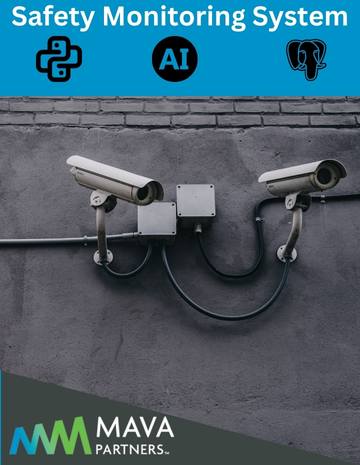PUBLIC SAFETY MONITORING SYSTEM
Category
AI/ML Security & Monitoring (Python + Django)
Overview
Organizations needed a system to monitor large, open areas (construction sites, schools, hospitals) for anomalies such as restricted zone breaches, crowd formations, missing safety gear, or fire hazards. Manual monitoring was error-prone and resource-intensive.

How the Problem Was Solved
Technology Stack:
Python (Django) for backend, a mix of OpenCV and machine learning algorithms for video analytics, and a PostgreSQL database.
Key Features:
- Real-time video feed processing
- Intelligent alerts for anomalies (crowd detection, PPE compliance, restricted access)
- Configurable dashboards for different use cases (construction sites vs. schools)
Approach:
- Machine Learning Models: Trained image recognition models to detect PPE, count people, and identify restricted zone breaches.
- RESTful APIs: Django REST framework for feeding real-time alerts to the monitoring dashboard.
- Scalable Architecture: Containerized microservices to process multiple camera feeds concurrently.
The Results
Impact on the Business:
- Reduced security incidents by 40% in pilot locations.
- Minimized the need for large on-site security teams.
Cost:
- ~150K USD
- Investment in GPU-based servers for real-time video processing.
Time:
- 8 months to build and train initial models, with ongoing improvements as new anomaly types were added.
Lessons Learned
- What Went Well:
- Integration of ML models into Django REST services was straightforward.
- Containerization (Docker/Kubernetes) allowed for efficient scaling and deployment.
- What We Would Do Differently Next Time
- Dedicate more effort to data collection and annotation upfront to improve model accuracy.
- Include built-in analytics to measure false-positive/false-negative rates from the start.
